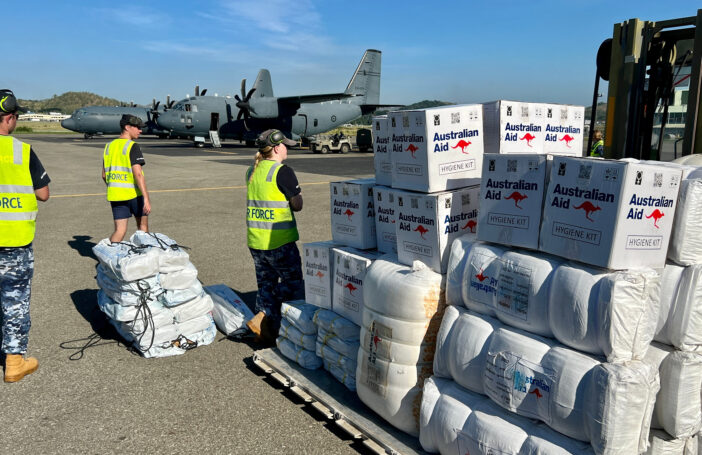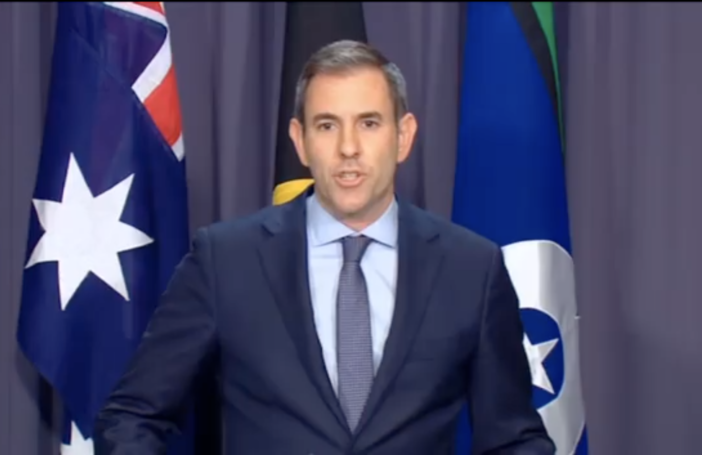As we gear up for a forecast $200-million-plus of aid cuts in today’s budget, it is timely to look back at last year’s aid cuts, and where they fell. After all, it was the largest cut in aid ever: 20% or $1 billion. The 2015-16 budget was clear where the cuts would fall geographically – the Pacific was to be protected, while Asia and Africa were to bear the brunt – but said very little about on which sectors they would fall. This was left up to each country and region. New data released by the Department of Foreign Affairs and Trade (DFAT) give some insight into how those decisions were made. The figure below summarizes the key results – the notes at the end of this post explains how I have derived these numbers.
Australian aid by sector, 2014-15 and 2015-16 estimates ($A million)
The largest cut in absolute terms is to education, which falls by $286 million or 27%. Once referred to as the aid program’s “flagship” sector, education no longer deserves that moniker, at least if measured by volume. How the education cuts have been distributed across scholarships and national education investments is not yet clear. Only very aggregate data is available so far for 2015-16.
The second largest cut in absolute terms, and the largest in relative terms, is to the residual, general category. It is hard to say much about this fairly volatile expenditure category.
The third largest cut in absolute terms is to health, which falls by $221 million or 28%. Between them, education and health made up 37% of the aid program before the 2015-16 cuts, but contributed 52% of the cuts.
What was protected? Just about everything was cut in absolute terms. Agriculture and infrastructure are two sectors the government would have been expected to protect given its “aid for trade” and private sector development commitments. And it did. Only modest cuts of 5% and 7% were applied to these sectors.
The big surprise is spending on governance, which, despite a 20% aggregate cut, apparently increased. The growth was only modest, a mere 3%, but nevertheless it’s a striking result. The $28 million increase to our 2014-15 $836 million spend on governance leaves the sector, now at $863 million, as our biggest of all.
Why the shift away from health and education to governance? In his speech at the Australasian Aid Conference in February, DFAT Secretary Peter Varghese admitted that, when governance is not working well in a recipient country, “it is far from easy to determine where exactly we should focus our attention.” And, indeed, Australia’s record in improving governance, especially where it is weakest, is far from stellar. In no country have we tried harder to improve governance than PNG.
It’s hard to give a definitive reason for these sectoral shifts. It will take another year before detailed information on 2015-16 is released. One likely contributor is the geographical distribution of the cuts. The Pacific was largely spared and (based on 2014-15 data) aid for governance is 32% of the total aid spend in the Pacific, but only 17% elsewhere. Multi-year commitments to multilaterals must also play a role, as these are imputed to various sectors.
It should be stressed that the 2015-16 figures are mid-year estimates, and there might be considerable change when more reliable figures are released (perhaps on budget night?). And, in any case, these sectoral estimates are always crude, with many aid expenditures hard to categorise. Nevertheless, the analysis, while rough, is instructive.
While neither the cuts to education and health nor the relative protection afforded to infrastructure and agriculture are unexpected, that governance seems to have escaped the knife altogether is both surprising and a cause for concern.
Stephen Howes is the Director of the Development Policy Centre.
The Development Policy Centre will hold its annual aid budget breakfast on Wednesday May 4 at ANU. Find out more, including links to registration and livestream, here.
Notes: 2015-16 figures come from 2015-16 Development Assistance Budget Summary Mid-Year Economic and Fiscal Outlook Update [as at February 2016] [pdf]. The percentage figures in Table 3 in that document are applied to total aid ($4051.7). 2014-15 figures come from Table 1 of the 2014-15 statistical summary or green book. Some of the sectoral labels are changed slightly for simplicity. What I call “Humanitarian” is referred to in the budget documents as “Building resilience” and includes environmental spending. Agriculture also includes fisheries and water resource management. Drinking water and sanitation is included with health. The “General” category is a residual.






How predictable this is when knowing the truth behind the “aid”. My expat friends and I, living in Indonesia, have discussed “aid” at length and have come to the conclusion that it is simply money transfers between entities. (Some say criminal types.)
Of course Education is the first to be cut. If you educate the people they will see that corruption is taking money from them. If they are healthy they will be able to see and hear clearly that the aid that should go to them is going in someone’s pocket. And, if they have good food, they will live long enough to change the society and be self-sustaining, which is definitely not good for getting more “aid” monies.
As an engineering person, I see the construction is sub-par and expensive. In reality, a project is an excuse to transfer monies. Health professionals cannot understand why so much is spent and so little is being done in health care or health education. In the education sector, we have seen that there is no real education of students, everyone passes so that the monies can be issued. My friendly group has investigated many cases and found that only 40% of the “aid” gets to the designated project. 60% is spent in overhead. In the U.S., we have two organizations that have those kind of numbers; one is the mafia, with their money laundering business, and the other is the federal government, whose business is spending the taxpayers hard earned money. Which one of these does AusAid fall under?
Faith-based groups and private investors get more done with less money by having less government involvement. The boots-on-the-ground people work hand in hand with those who want better lives. If there was more transparency in government and fiscal responsibility to the taxpayers (investors), the world would change in a very short time.
Its a pity health and education must be subjected to a reduced budget not only from the Australian AIDE but also internally where the PNG Government had decided to cut K 50 million from the churches medical sector in 2016. This is despite PNG’s global standing on maternal mortality at 6th worst in the world. An established system of 24 hours lighting system in labor ward delivery rooms across the country would make so much a difference in the periods between child birth and perinatal period in the following 6 weeks.
Solar energy for example, is an increasingly favored technology that is reliable, affordable, constant and user friendly that is geographically fragmented by deep gorges, high mountains, fast flowing rivers and yet the PNG Government has completely ignored basic strategies to improve health and community standard of indigenous communities.
From a layman’s perception, while we appreciate Australian AIDE to improve governance in PNG, it would be of interest to genuine PNG citizens that Australian AIDE as well as from other donor countries are temporarily swayed to allow the PNG government to clean up its attitude rather than continually play the ‘naughty child’s’ mentality through receiving from both the right and the left hand and still isn’t satisfied while others are kept patiently standing in line awaiting a share they too must benefit from the Australian tax payers.
Papua New Guinea citizens must genuinely earn from sweat and tears toiling the land than sitting around waiting for free hand outs, nothing falls freely from the sky since the time of Mana.